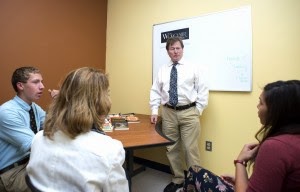By
Taryn Plumb |
GLOBE CORRESPONDENT
OCTOBER
19, 2014
Getting
lost is typically not a state any of us wants to be in — unless, of
course, we’re looking for it.
That’s
the quintessential fall tradition of corn mazes: exploring among the
rows and rows of labyrinthine stalks, getting turned around, hitting
dead ends, following clues, and finally breaking free into the autumn
air.
“We
love to see old and young, just having fun,” said Lynn Reading of
Billingsgate Farm in Plympton, which offers up a corn maze of a
different theme every fall. “It’s good exercise; it’s
educational.”
For
adventurous types, the region is teeming with maize cut with
crisscrossing passageways and corridors, false exits, and obstacles,
ready to be navigated. The state boasts roughly 30 corn mazes, and
there are about 800 scattered across the country, according to the
tracking group Corn Mazes America.
“It’s
just so much fun,” said Jan Nargi of Hanson’s Farm in Framingham.
“It’s a throwback to childhood.
Hanson’s
annual 3-acre maze — open through Nov. 1 — doesn’t have a
particular theme, although visitors are met with the playfully
ominous signs “Enter if you Dare,” and “Exit if you Can.”
“We’ve
had high school kids who have been able to buzz through it in about
15 minutes,” Nargi said, “and then couples will take their time
and be in there for an hour.”
The
farm is also offering haunted hayrides on Friday and Saturday nights
through Nov. 1; the trek traverses the fields while various creepy
characters “come out and torment folks,” Nargi said. “I’m
told it’s pretty scary.”
Billingsgate,
meanwhile, has an elaborate pirate theme with a design featuring a
ship, turbulent seas, skull and crossbones, and a desert island.To
work their way through its passages, explorers take clues from
pictures, word games, and questions (such as: How many yards can a
pirate cannon fire? Answer: Between 100 and 200 yards). Reading says
the real pathfinders who make it to the center of the maze will find
a treasure chest from which they can pull out a lucky coin.
The
farm works with the national design company Maize Quest, and in the
past it has had a rain-forest theme, and an emphasis on buying fresh
and local.
This
year, the farm is also incorporating a kiddie maze, titled “Jack
and the Cornstalk,’’ and pet lovers can bring their dogs to an
animal-friendly maze day on Nov. 1, its last day open.
For
a spookier experience, Billingsgate will host a night event on
Saturday where people will have to find their way just by the
illumination of their flashlights.
“It
is a little bit more challenging,” said Reading. “It is a sight
to see all the lights going inside the maze.”
Of
course, “corn cops” are always on hand to help people on the
paths, she said.
Marini
Farm in Ipswich also has “maze masters,” and travelers are given
flags, a phone number to call for help, and a link to the website
www.mazetracker.com
that
can help them exit via GPS.
“They
can feel comfortable where it’s not something they’re going to
get lost in for hours and hours,” said corn maze employee Sarah
Churchill.
To
have the best experience, she also urged people to dress
appropriately for the weather and bring water.
This
year’s theme for the farm’s sizable 10-acre maze is “Spookley,”
based on a children’s book about a square pumpkin who gets bullied
— until he wins the favor of his round friends. Several stations
through the maze are set up with clues and game pieces, Churchill
said.
And
don’t forget about the world-famous befuddler at Connors Farm in
Danvers (nicknamed the “911 maze” because of a notorious
emergency call made in 2011, when a family literally got lost
inside). Its 7-acre maze, open daily through Nov. 2, has an “America
the Beautiful” theme this fall, looking from an aerial perspective
a verdant map of the United States. Past themes have included “Family
Guy,” Clint Eastwood, and the witches of Salem. Accompanying the
attraction is a zombie paintball ride, a paranormal cemetery walk,
and an assembly of creepy, murderous characters.
“It
can be done with the whole family; it’s exciting for everybody from
adults down to small children,” Churchill said of Marini’s maze,
which is open until Nov. 1. And it’s an “actual cornfield —
you’re out there in mud and rocks — on an actual working farm.”
But
while for the visitor it’s cavorting and fun, creating a maze takes
a great deal of planning and manual labor.
At
Hanson’s Farm, a group spends hours cutting the stalks back with
machetes.
“It’s
labor-intensive,” said Nargi, adding that “we don’t want to
make it too easy.”
The
4-acre puzzle at Mansfield’s Flint Farm starts as a a mere grid on
graph paper; then, when the stalks are only 3 or 4 inches high, it’s
manicured and cut to specs with a lawnmower.
Even
though his family has been creating mazes for more than a decade,
Dave Flint never really knows for sure whether the design came out
just right until he gets a glimpse of it from the air, in a small
plane from the nearby Mansfield Municipal Airport.
In
the past, the family has designed mazes with themes of the beach, ice
cream cones, and to celebrate a Red Sox World Series win.
“The
hardest part is coming up with something you can incorporate into a
maze,” said Flint.
This
year, the theme is an old-school pickup truck, accompanied by
questions related to America’s favorite vehicle.
“It’s
a ‘what you make of it’ kind of thing,” Flint said, “just to
get outside and do something.”
Original story link.




